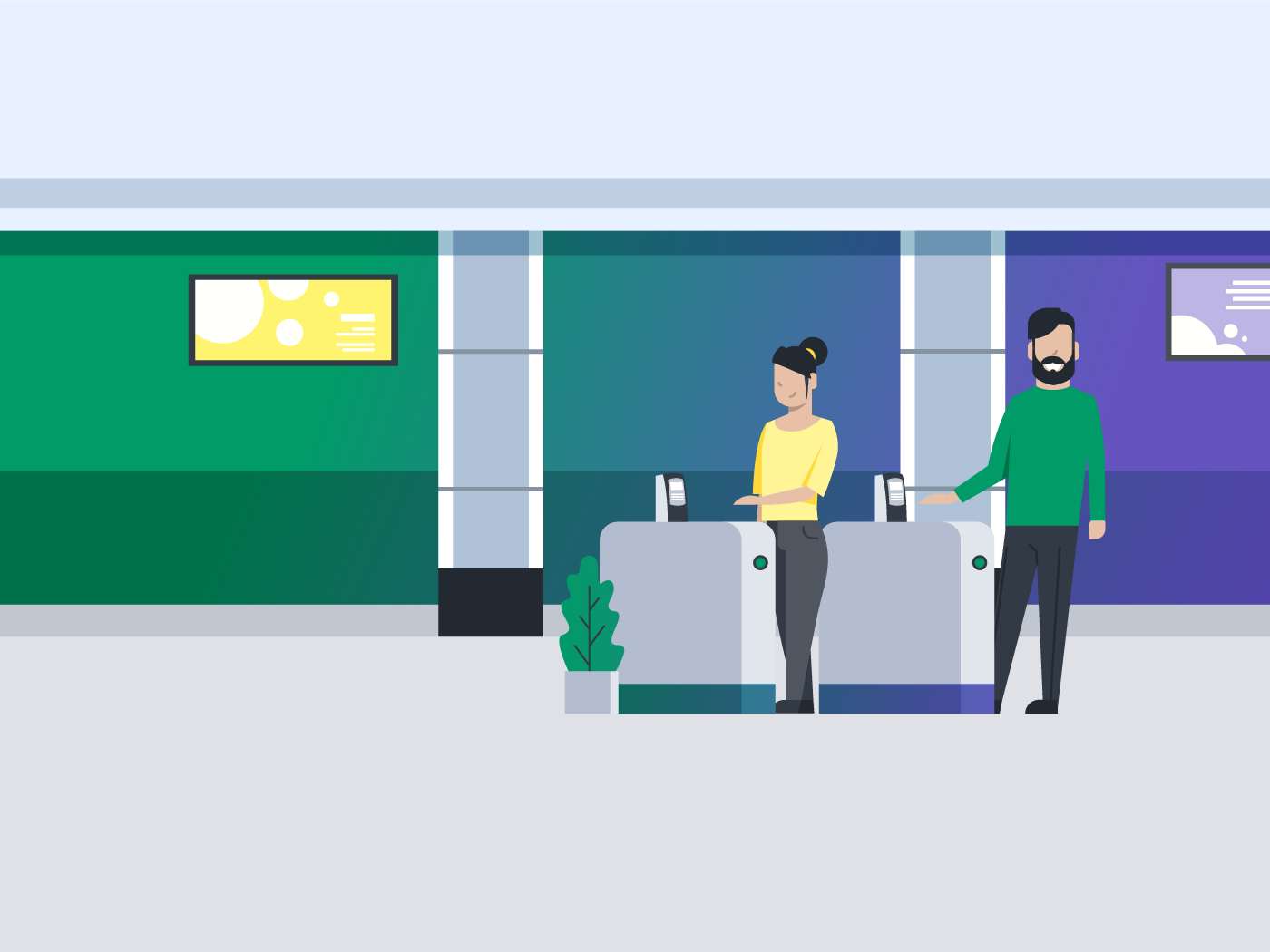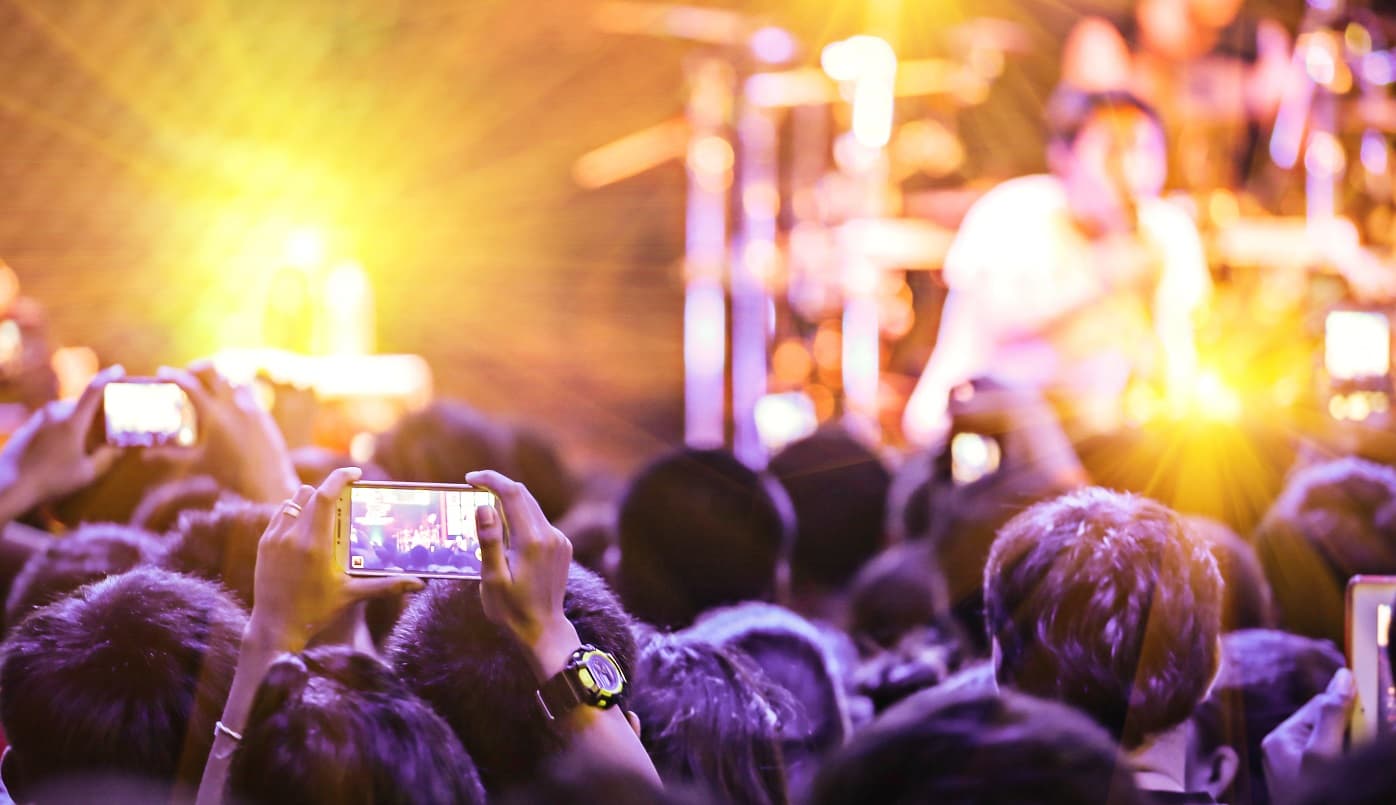Please accept cookies to access this content
Event venues generate significant revenue from concessions—the average customer spends $32.02 on food and beverages at sports and concert events, according to Datassential's 2023 report. For many venues, concessions represent a substantial portion of total revenue, making optimization crucial for profitability.
Contactless ordering transforms how you capture this revenue. Instead of hoping customers will wait in long lines or make impulse purchases, you can engage them from the moment they buy tickets, increasing both order frequency and size.
A Shift in Event Dynamics: Embracing Contactless Ordering

The onset of the COVID-19 pandemic not only reshaped safety protocols but also accelerated the demand for contactless experiences. As venues across North America reopened to near-full capacity, a resurgence of in-seat food ordering became evident.
Notably, the desire for a contactless environment was fueled by a collective eagerness to minimize unnecessary physical interactions, fostering a safer and more hygienic event experience. While the concept of in-seat food ordering appears innovative, its inception dates back several years.
The Birth and Evolution of In-Seat Food Ordering at Events
While in-seat food ordering may seem like a recent innovation, its roots trace back years earlier. In 2014, Madison Square Garden pioneered in-seat ordering, setting the stage for a digital transformation in patrons engaging with concessions.
The integration of digital point-of-sale systems empowered attendees to order food, drinks, and merchandise seamlessly through their personal devices. This marked the inception of a trend that has since evolved to cater to the preferences of an increasingly tech-savvy audience.
Post-pandemic, the paradigm shift in venue operations aimed at balancing occupancy regulations with profitability per customer became a core focus. In-seat ordering emerged as a solution to streamline food services, allowing patrons to pre-order meals and ensuring prompt delivery to their seats. This not only enhanced the fan experience but also aligned with safety measures, contributing to the overall success of venues in a transitional period.
In-Seat Ordering Drives Change
Please accept cookies to access this content
The post-pandemic world ushered in a series of changes in how venues operate, particularly in enhancing the fan experience while adhering to safety measures. Extensive renovations of sports and concert venues are also driving additional development of the necessary infrastructure to support digital transformation and the use of new technologies.
The prevalence of mobile ticketing and payment systems has reached an all-time high in stadiums nationwide, with mobile ordering not far behind. At BC Place in Vancouver, Centerplate has introduced in-seat mobile ordering for 1,500 exclusive club-level seats, achieving an impressive 26% adoption rate.
Enthusiastic sports fans can effortlessly use their smartphones to scan QR code stickers placed on the seatbacks in front of them, instantly accessing a menu and placing orders without the need to download any additional applications. Each QR code is encoded with specific data. Consequently, when a fan utilizes Apple Pay or Google Pay for their order, food delivery personnel are promptly notified of the seat number, ensuring swift delivery of the order within minutes.
Furthermore, there's a noticeable surge in the popularity of cashier-less markets and self-service drink refill stations. This trend is not just about convenience but also optimizing labor resources. The focus is transferring labor responsibilities to consumers while enhancing overall experiences and bolstering profitability with a leaner workforce.
As in-seat ordering continues to grow, operators of sports venues are opening up more space for pickup lines or even lockers to store food until the fans come to collect it. Venues see in-seat ordering as a solution that will streamline the food service process, allowing patrons to pre-order meals and facilitating quicker and more efficient delivery directly to their seats.
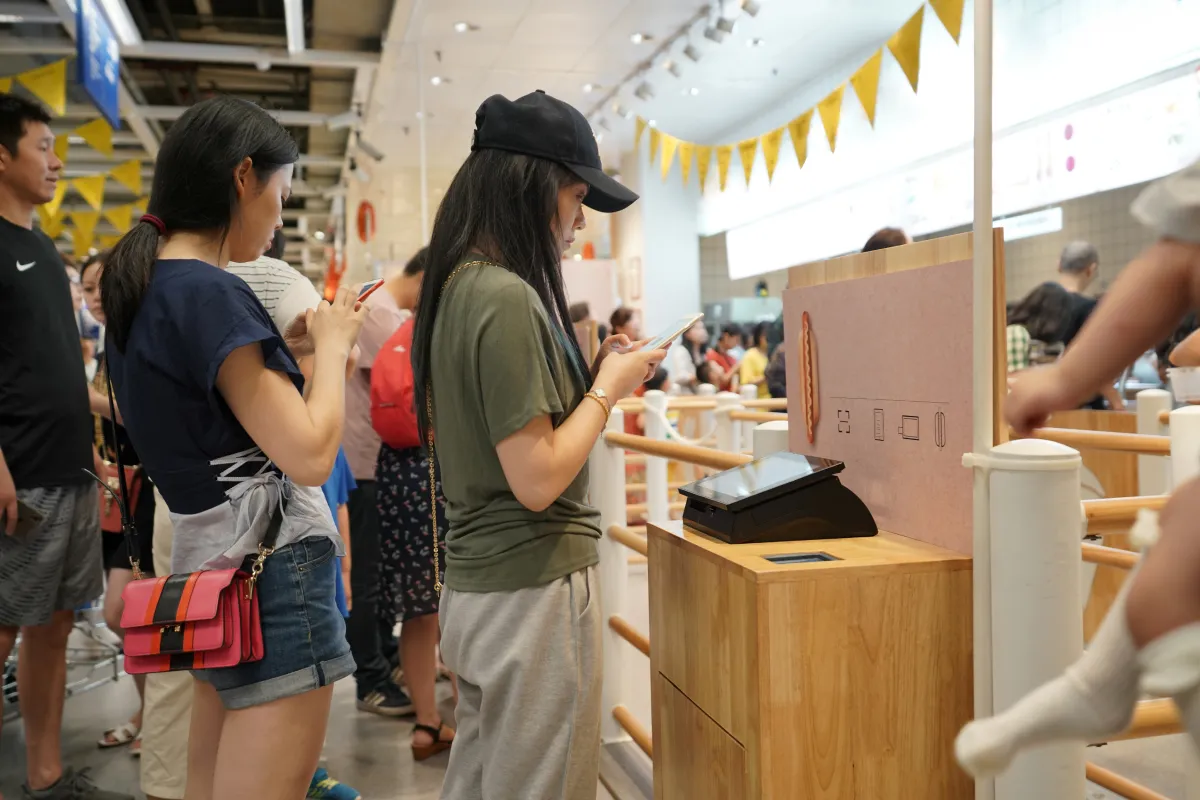
The Demand for Contactless and Cashless Experiences
Contactless ordering isn't merely a convenience; it's a shift towards safer and more hygienic practices. However, catering to diverse preferences remains a challenge. Still, some of the biggest problems for fans are long lines, slow service and errors in food and drink orders.
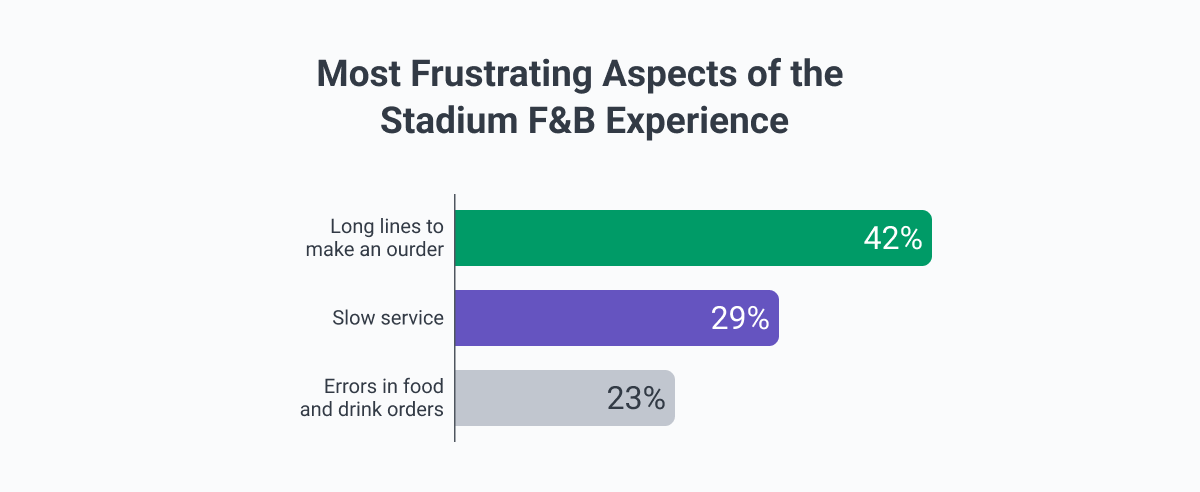
While a significant percentage of patrons prefer digital payments and contactless experiences, some still opt for physical cash. Balancing these preferences poses operational challenges but presents opportunities for food service vendors to align with safety measures and elevate the overall customer experience.
Embracing New Technologies for In-Seat Ordering
As venues look towards a future that embraces near-full capacity, the need for food service vendors to integrate robust and adaptable systems becomes paramount. Each venue presents its unique challenges, requiring vendors to be agile and flexible in predicting and managing product demands.
Digital integration not only streamlines operations but also enables vendors to gauge customer preferences, optimize inventory, and drive profitability through strategic pricing strategies. Here are some of the latest examples of using new technology to improve customer experience:
AI Self-Checkout. AT&T Center features AI self-checkpoint with self-dispensing popcorn machines in several locations.
Digital Age Verification. Fans in the AT&T Center will be able to order cocktails via an automated service that will use facial recognition tech to recognize all users registered with a government-issued ID.
Self-Ordering Kiosks. Touch-to-order kiosks will allow customers to customize their event experience with food delivery to their seats or get food at the kiosks.
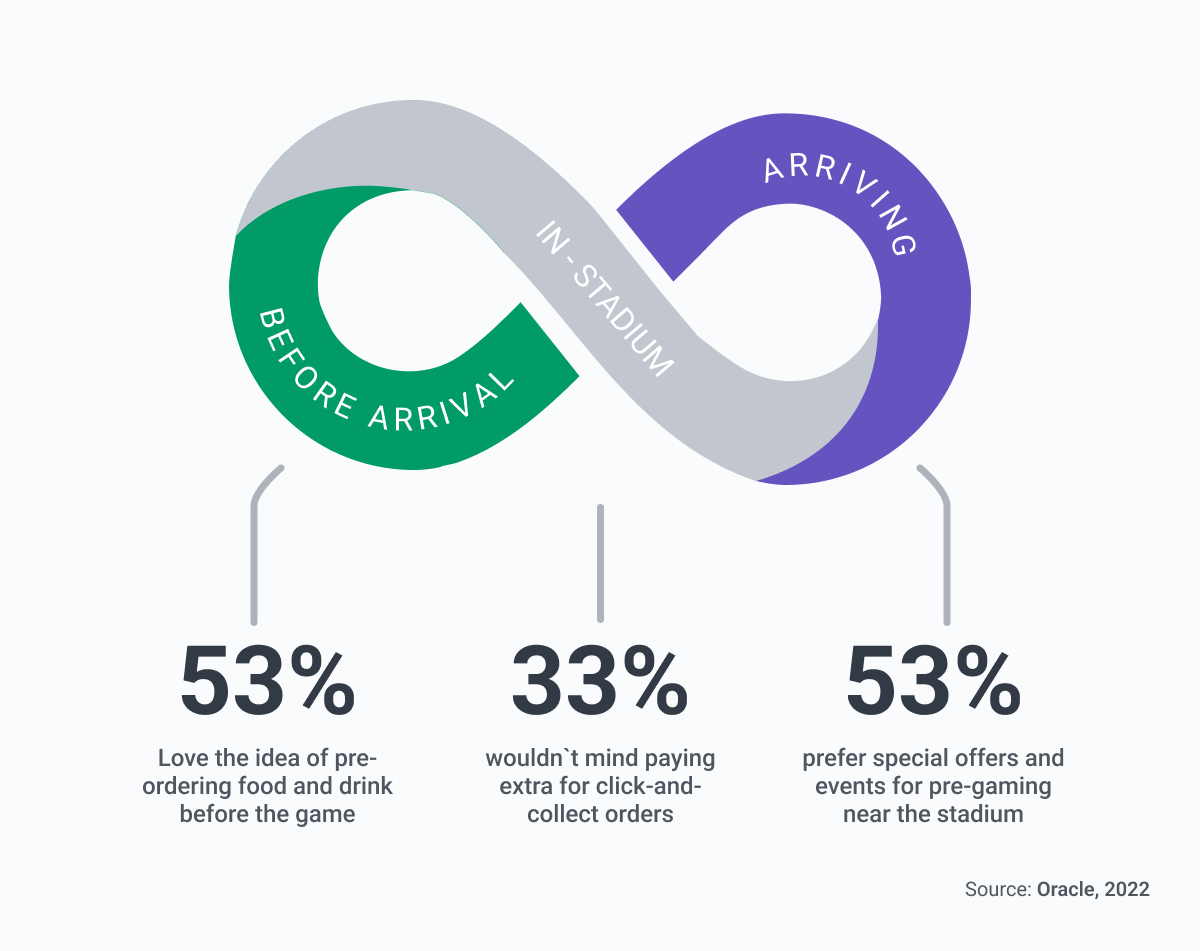
How Contactless Ordering Enhances Ticket Buying
Contactless ordering fits well into the traditional ticketing platform flow. Following a similar upsell process as add-on merchandise, parking, reservations, and more.
Like other add-on items, API integrations enable contactless ordering during the ticket-buying process. There are several parties involved in contactless dining: the ticketing platform, a digital order provider, and food vendor(s). We have devised workflows to resolve the complexity of connecting these entities. The tighter the level of integration, the more automation and options.
An attendee can make their food choices, select a time for delivery, and complete payment for their tickets, food and beverage, and any other add-on items at the same point in time.
On the fulfillment and delivery side, the digital order provider integrates with the food vendor's POS system. When an order is placed, the digital order provider transmits the details to the vendor's POS system. This allows the vendor to organize inventory, food preparation, and delivery processes. How the kitchen receives the order from the POS service depends on the vendor’s internal automation.
Here’s a high-level look at the contactless ordering integration process between those involved:
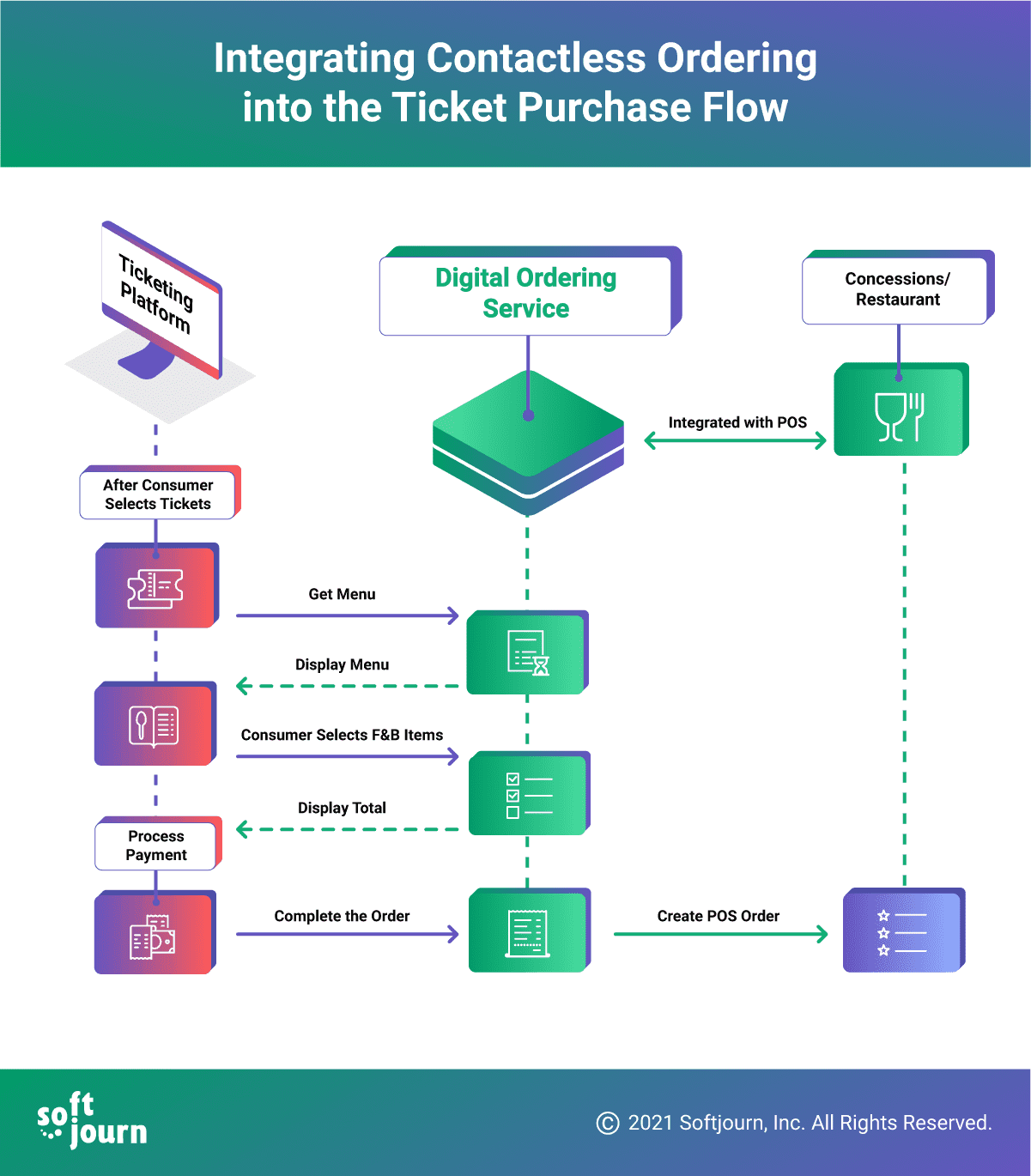
Connecting the three (or more) parties involved in implementing contactless ordering into the ticket purchase process can be complex.
Ticket sale confirmation would be the same as it is today. Whether email or app notification, it can include a sale list, including any food and beverage. The receipt can also include a link to adding a ticket to the patron’s preferred digital wallet.
Ticketing platforms can capture the patron’s mobile device number and send a notification to the patron to confirm delivery. Patrons also must have a way to contact someone if their order does not arrive or if they are not receiving notifications. The ticketing platform's access control app or confirmation notification should provide support details.
5 Key Benefits of Contactless Ordering Integration for your Venue
1. Improved Patron Experience
You can engage customers from arrival to departure through their mobile devices. Your access control app can welcome them, confirm orders, and send real-time updates about delivery times. This proactive communication reduces frustration and builds loyalty.
BC Place in Vancouver achieved a 26% adoption rate for in-seat ordering by making the process seamless—customers simply scan QR codes on seatbacks to access menus without downloading apps.
2. Increase Order Frequency and Size
Pre-ordering removes barriers to purchase. Customers who order during ticket purchase typically add more items throughout the event. You should always include links for additional orders in confirmation emails and provide easy reordering options.
The key is making both initial and additional ordering frictionless. Each order should include confirmation, status updates, and estimated delivery times.
3. Build Stronger Customer Relationships
Direct mobile communication lets you address issues before they become complaints or negative reviews. You can collect valuable data during the sales process, including:
- Food and beverage preferences
- Spending patterns
- Timing preferences
- Satisfaction feedback
This data enables better forecasting, personalized upsells, and improved future event planning.
4. Expand Beyond Traditional Venues
While sports venues pioneered contactless ordering, the model works across entertainment sectors. Marcus Theatres generated 44% of its 2022 revenue—$59.7 million in Q2 2023—from concessions by integrating food sales with ticket purchases.
Consider partnerships with local restaurants to offer pre-event dining, intermission snacks, or post-show meals. Customers can order and pay when purchasing tickets, creating a complete entertainment package.
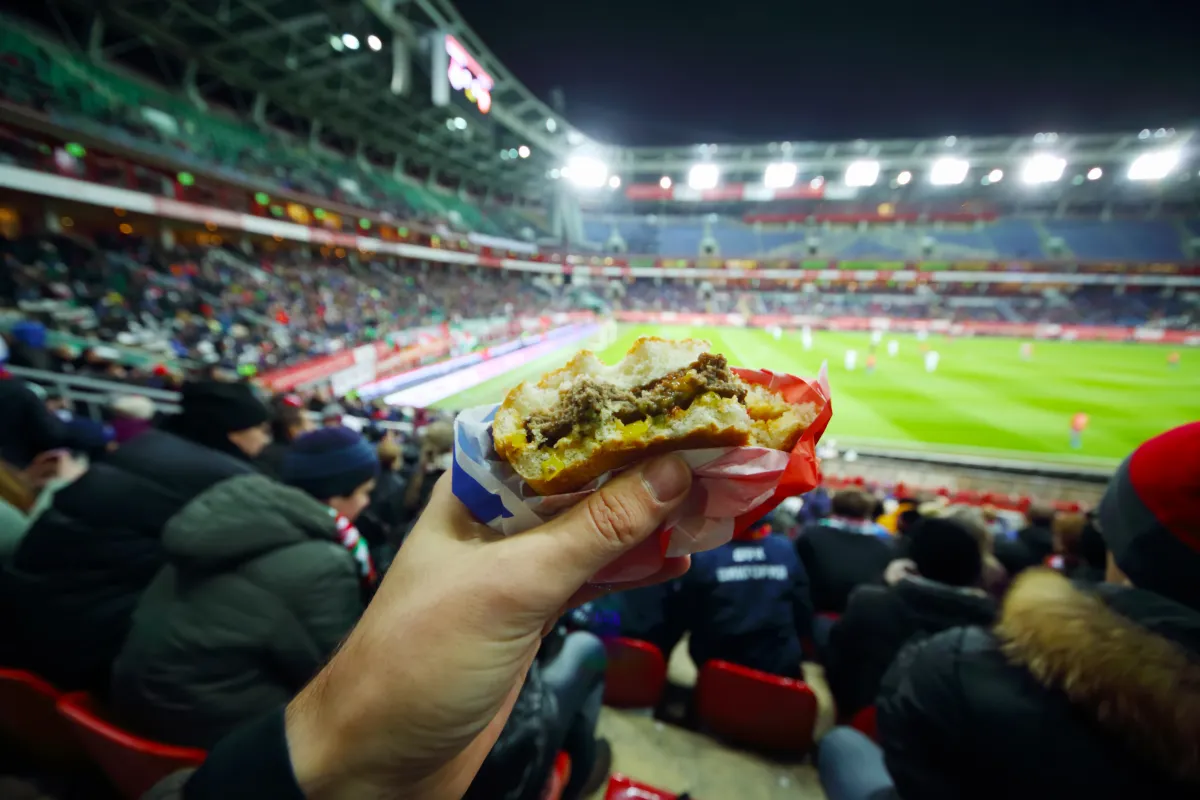
In Marcus Theatres, 2022 was particularly successful, with 44% of its annual revenue coming from concessions. According to Statista, in Q2 of 2023, Marcus Theatres reported $59.7 million in theatre concession sales alone.
By folding food and beverage sales in with ticket purchases, cinemas can encourage patrons to buy more. Another idea is partnering with local restaurants to provide contactless ordering of food and beverages before, during, or after an event. Patrons order and pay for their food when purchasing tickets.
5. Meet Customer Expectations for Convenience
Forty-four percent of Americans cite convenience as the most important factor when ordering food through mobile devices. Your customers already expect delivery and contactless payments in their daily lives—your venue should offer the same experience.
The transition from counter service to mobile ordering mirrors the broader shift toward on-demand services. Instead of customers walking to concession stands, staff deliver directly to seats, just like any other delivery service.
Operational Benefits and Considerations
Streamlined Operations
Contactless ordering helps you:
- Forecast demand accurately: Pre-orders enable better inventory management and prep scheduling
- Optimize staffing: Redirect counter staff to delivery roles or other customer service areas
- Reduce wait times: Eliminate concession stand bottlenecks during peak periods
- Increase safety: Minimize crowding and contact points
Implementation Considerations
Technical complexity: Orders must flow seamlessly between ticketing platforms, ordering systems, and kitchen displays. Any communication breakdown can disrupt service.
Delivery logistics: You'll need sufficient staff to handle in-seat delivery, especially during high-demand periods like halftime or intermissions.
Timing coordination: Customers select delivery times when ordering, but kitchen capacity or staffing issues may require schedule changes. You need systems to notify customers of delays.
Payment processing: While most customers prefer digital payments, some still use cash. Plan for multiple payment options during the transition period.
Strategies for Successful In-Seat and Contactless Ordering
Successful implementation of in-seat and contactless ordering systems necessitates a multifaceted approach. Vendors must navigate unique venue requirements, promote contactless payments, strategically price offerings to welcome patrons back, and reimagine traditional buffet-style services to align with the new norm of individualized experiences.

1. Adapt to Your Venue's Specific Needs
Every venue has unique layouts, customer demographics, and technical infrastructure. Customize your solution accordingly—a 20,000-seat stadium requires different logistics than a 2,000-seat theater.
2. Ensure Comprehensive System Integration
Your solution should handle the entire process from menu browsing to payment and delivery tracking. Seamless integration between all systems optimizes efficiency and user experience.
3. Use Data for Demand Forecasting
Leverage historical patterns and real-time analytics to predict demand accurately. This helps manage inventory, minimize waste, and ensure adequate staffing for delivery.
4. Promote Digital Payments
Educate customers about the benefits of contactless payments—safety, speed, and convenience. Consider loyalty programs that reward digital transactions with points, discounts, or exclusive offers.
5. Optimize Delivery Workflows
Redesign kitchen processes and delivery routes for efficiency. Train staff on new procedures and establish clear communication protocols between kitchen, delivery, and customer service teams.
6. Gather Continuous Feedback
Implement feedback systems to identify issues quickly. Use customer input to refine ordering processes, menu options, and delivery procedures.
The Path Forward: Navigating Uncertainty
Canadian venues, in particular, face challenges in opening to full capacity, compelling vendors to explore alternative strategies such as in-seat delivery to engage with fans. In contrast, American venues forge ahead, urging food service vendors to upgrade systems to ensure seamless operations at near-maximum occupancy.
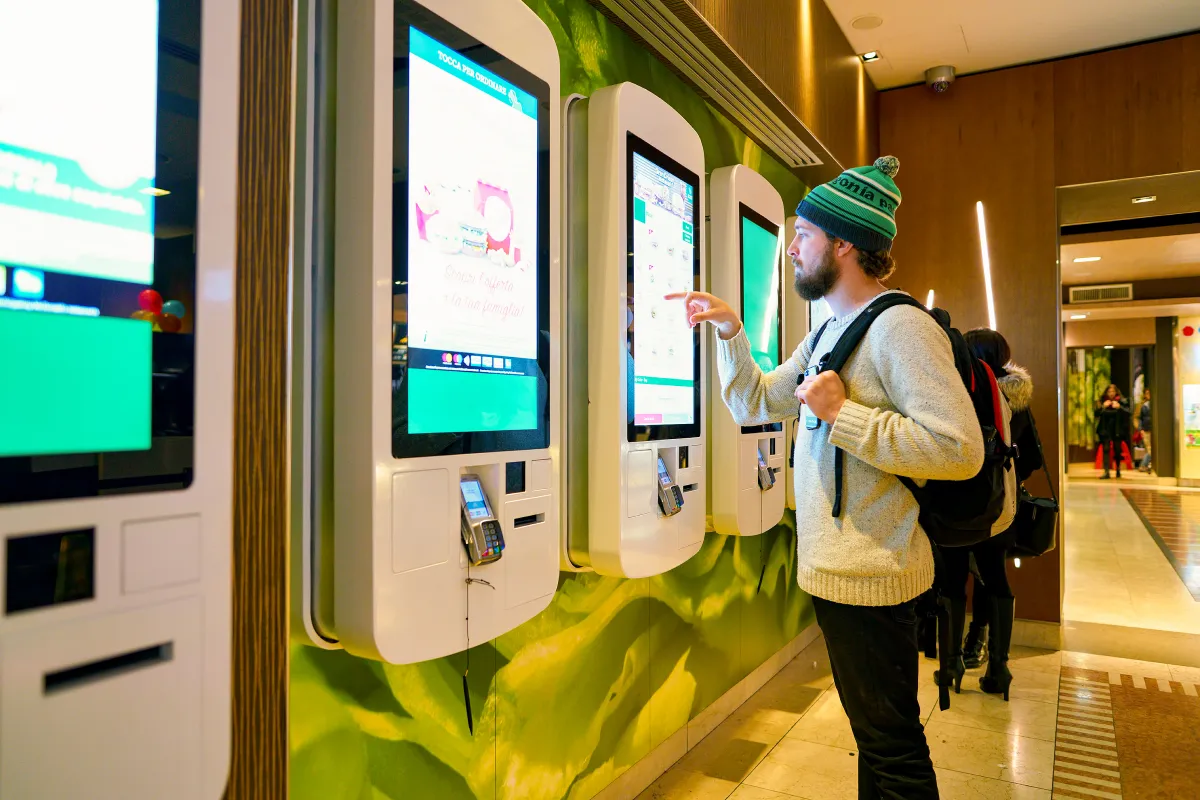
Conclusion: A New Era of Event Experiences
Contactless ordering isn't just about technology—it's about meeting evolving customer expectations while increasing revenue. Venues that integrate ordering with ticketing can capture more food and beverage sales, reduce operational friction, and create better customer experiences.
The question isn't whether to implement contactless ordering, but how quickly you can get started. Your customers are already comfortable with mobile ordering in other contexts—bring that same convenience to your venue.
Frequently Asked Questions
How much could integrating contactless ordering with the ticket purchase increase food and beverage sales?
Revenue increases depend on marketing effort and customer adoption. Venues typically see 10-30% conversion on food and beverage upsells during ticket purchase, with higher rates when promotions are applied. The key is making customers aware of the option and its benefits.
How long would it take for a ticketing platform to get up and running with contactless ordering?
Integration typically requires 6-12 weeks, depending on:
- Your existing technical infrastructure
- Chosen delivery service provider
- Food vendor integrations
- Menu setup complexity
- Staff training requirements
Can contactless ordering work for a smaller venue?
Yes. Safety concerns and customer expectations for convenience apply to venues of all sizes. The technology scales to accommodate different venue types and capacities.
1Oracle. (2019, May 31). Survey: Sports Fans Call Foul on Long Concession Wait Times at Stadiums.
2Appetize and SurveyMonkey. (2020, November 18). Appetize Contactless Survey Reveals Customer Trends and Preferences.
3Morgan, C. (2019, August 02). 17 sneaky ways movie theaters get you to spend more money.
4Stoll, J. (2021, January 13). Likelihood of buying concessions at movie theaters in the U.S. 2018.
5Appetize and SurveyMonkey. (2020, November 18). Appetize Contactless Survey Reveals Customer Trends and Preferences.
6Oracle. (2019, May 31). Survey: Sports Fans Call Foul on Long Concession Wait Times at Stadiums.






